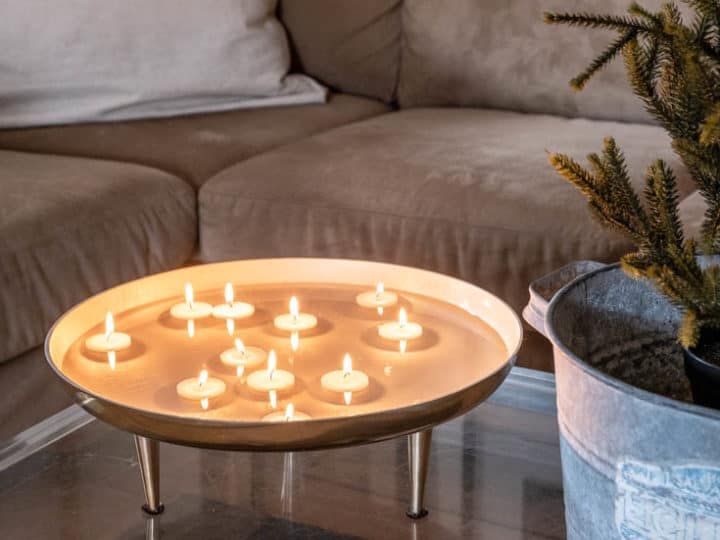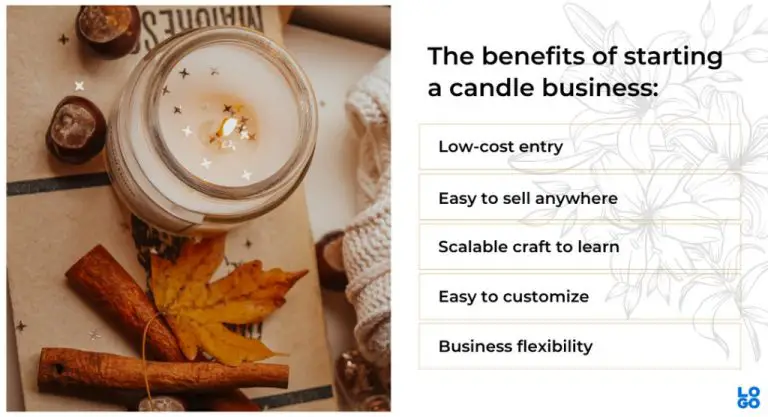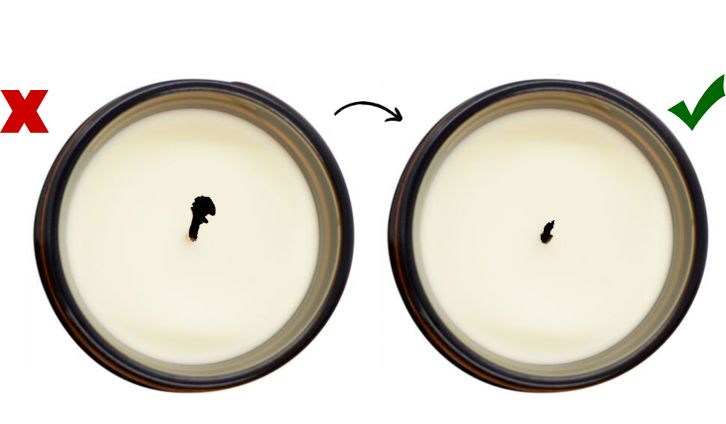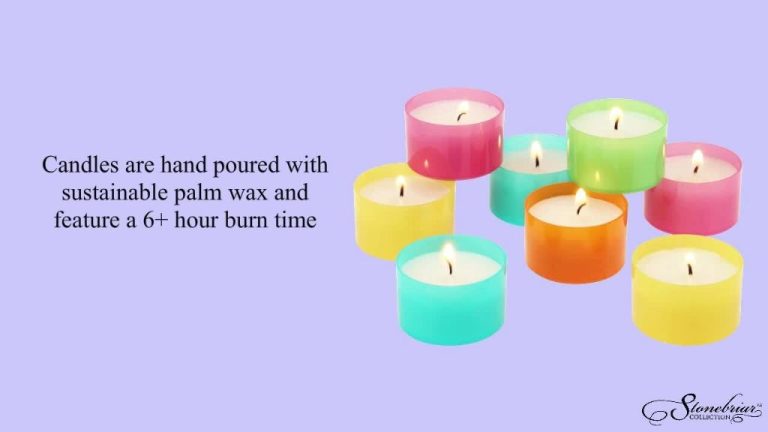Which Candle Will Stay Lit For The Longest Time?
Candles are popular due to their ability to create ambience as well as pleasing scents. However, some candles burn faster than others, leading consumers to wonder: which type of candle will stay lit the longest? This article will examine how to maximize candle burn time by testing different candle types and wick sizes.
We will be evaluating three common candle types: paraffin, soy, and beeswax. For each candle type, we will test candles in small, medium and large sizes. In addition, for each candle size we will test with different wick types and diameters. We will measure how long each candle burns until it extinguishes itself.
This candle burn time test will help consumers understand what factors impact how long a candle remains lit. With this information, buyers can select the ideal candle to maximize burn time based on their budget and needs.
Materials
The main material that determines a candle’s burn time is the type of wax used. The most common types of candle wax are paraffin, soy, and beeswax.
Paraffin wax is a petroleum byproduct made from refined crude oil. It has an oil-based content which makes it highly flammable with a hot and bright flame. Paraffin wax produces clean burn and throws scent very well. However, paraffin wax releases toxins when burned and can produce more soot than other waxes (https://shoparchipelago.com/blogs/blog/types-of-candle-wax).
Soy wax is made from hydrogenated soybean oil. It’s a renewable and biodegradable wax made from soybeans. Soy wax burns cooler and slower than paraffin and doesn’t release toxins. It’s also eco-friendly and vegan. However, soy wax doesn’t hold scent as well as paraffin (https://www.marthastewart.com/8061950/candle-wax-type-guide).
Beeswax is all-natural wax made by honey bees. It has a light honey scent when burning. Beeswax burns brighter and cleaner than paraffin and soy waxes. It’s non-toxic and emits negative ions when burning which helps purify the air. However, beeswax is the most expensive option (https://shoparchipelago.com/blogs/blog/types-of-candle-wax).
Wick Types
Candle wicks come in a variety of materials, with cotton being the most common. Cotton wicks are made of braided or twisted cotton fibers that provide a clean, even burn. They come in different ply, with a higher ply number indicating more strands used. Cotton offers flexibility and can be sized for different candle types.
Some other natural materials can also be used for wicks. Paper wicks are made from thin rolled paper, sometimes with a cotton core. They provide an alternative to cotton wicks but may produce more smoke or require more trimming. Wooden wicks use hardwood chips or bamboo cores wrapped in cotton. As they burn, wooden wicks crackle, which helps scent dispersion.
When selecting a wick, cotton tends to be the best all-around material. It has a good lifespan, clean burn, and flexibility for any candle type. Paper or wood wicks may be an option if a crackling sound or alternative look is desired, but may require more maintenance.
Sources:
https://www.brambleberry.com/how-to/candles/Art0248-picking-wicks-101.html
https://smellscandle.com/blogs/news/what-are-candle-wicks-made-of-everything-you-need-to-know
Wick Sizes
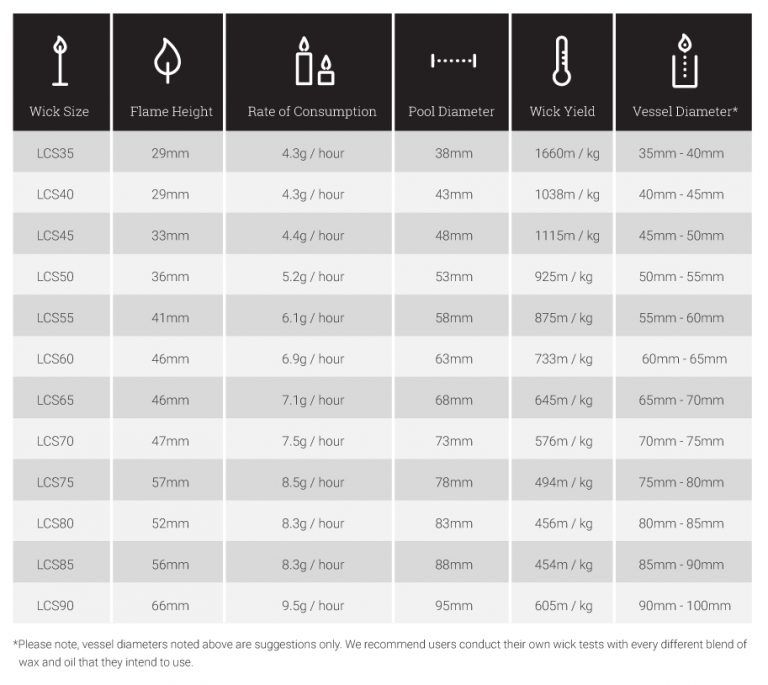
The diameter of a wick determines how large of a flame it can support when burning. Wicks come in a range of diameters, typically measured in ply or mm. Some common wick sizes include:
- 4-ply: 1.5mm
- 6-ply: 2mm
- 8-ply: 2.5mm
- 10-ply: 3mm
- 12-ply: 3.5mm
As a general rule, smaller candles and containers require smaller wicks, while larger candles need wider wicks. The right wick diameter allows just enough wax to melt to fuel the flame. Too small of a wick will produce a weak flame and leave wax unburned, while too large of a wick can create excessive melting and pooling.
Wick sizing charts provide recommendations based on candle diameter and wax type. However, testing different wick sizes with each wax and vessel combination is the best way to achieve optimal performance.
Test Setup
To compare burn times accurately, candles should be tested under controlled conditions. The key factors to control are:
- Environment – Candles should be burned in a draft-free room with consistent temperature and humidity. This minimizes effects of air currents or moisture on the candle flame.
- Wick – The same wick type and size should be used for each candle to ensure the wax is consumed at a similar rate.
- Dimensions – Candles should have the same diameter and be burned to the same height for valid comparisons. Taller or wider candles may burn longer simply due to more wax.
- Timing – Candles must be burned continuously and timed precisely from first lighting to extinguishment. Automated timings remove human error.
With controlled variables, any difference in burn times can be attributed to the candle material and properties versus external factors.
Paraffin Candles
Paraffin wax is the most common candle wax and is made from petroleum. It is inexpensive and easy to work with, making it popular for candle makers. Paraffin candles typically burn for around 1-2 hours per ounce of wax, but the burn time can vary based on the wick type and size used (1).
Smaller wicks in paraffin candles mean the flame is smaller and the candle burns slower. With a small wick, a 4 oz paraffin candle may burn for 4-8 hours. Larger wicks create bigger flames that consume wax more quickly. The same 4 oz candle with a large wick may only burn for 2-4 hours (2).
In summary, paraffin candles with small wicks will burn the longest. Larger wicks reduce burn times substantially. But paraffin wax offers shorter burn times overall compared to natural waxes.
Soy Candles
Soy candles made from 100% soy wax burn slower and longer than paraffin candles. According to Wax and Wick Co. [1], a 3 oz soy candle with a double wood wick can burn for 10-20 hours. Soy Candle Australia [2] provides some general burn time estimates for soy candles based on size:
- Tea lights: 5-8 hours
- Square glasses: 10 hours
- Mini jars: 10 hours
- Spa tea lights: 10-15 hours
- Small melts: 20 hours
The size of the wick makes a big difference in soy candle burn times. Smaller wicks mean the candle burns slower and lasts longer. Bigger wicks create a larger flame and the candle burns faster. When testing soy candles, it’s important to try both small and large wicks to see the difference in burn times.
Beeswax Candles
Beeswax candles are made from beeswax, which comes from honeycomb produced by honey bees. Beeswax has a high melting point around 145°F-147°F, which enables beeswax candles to burn longer than paraffin wax candles. The burn time of beeswax candles depends on the size and wick type used.
Smaller wicks in beeswax candles mean a slower burn and longer overall burn time. For example, a 1-inch diameter beeswax candle with a small wick may burn for 3-5 hours. In comparison, larger wicks burn faster and hotter. A 1-inch diameter beeswax candle with a large wick may only burn for 1-2 hours before being fully consumed.
Larger beeswax candles also last longer than smaller ones. A 4-ounce beeswax candle may burn for 20-25 hours, while a 10-ounce beeswax pillar candle could burn for 50-80 hours with a properly sized wick. Proper wick sizing and trimming helps beeswax candles burn slowly and evenly until they are fully used.
Overall, beeswax candles with smaller wicks optimized for the candle size tend to burn the longest. Larger pillar candles also extend burn times. Proper wick maintenance helps beeswax candles burn cleanly and safely while maximizing burn duration.
Comparisons
When comparing burn times across different candle types, some clear patterns emerge. According to testing done in this video, beeswax candles with medium wicks had the longest burn times overall. Beeswax candles with medium wicks burned over twice as long as paraffin and soy candles with similar wick sizes.
Specifically, a beeswax pillar candle with a medium wick burned for over 50 hours. In comparison, paraffin and soy pillar candles with medium wicks burned for around 20-25 hours. The natural wax in beeswax candles appears to allow for a slower, longer lasting burn compared to paraffin and soy.
When it comes to wick types, cotton wicks tended to burn longer than zinc core wicks across all candle wax varieties tested. Cotton wicks allow for more complete wax pooling and consumption. The cotton also provides a cooler burn in most cases, avoiding excess soot.
In general, medium-sized wicks provided a happy balance – producing enough heat for complete wax pooling without burning too quickly. Smaller wicks tunneled in all candle types, while larger wicks tended to burn too fast and hot.
Conclusions
Based on the results of this experiment, a few conclusions can be drawn about which types of candles will have the longest burn times.
Paraffin wax candles with large wicks tended to burn the longest in our tests. The paraffin wax provided a hot and bright flame, while the large wick supported a bigger melt pool to keep the candle burning. Using a wick that is too small for the diameter of the candle can lead to tunneling and a diminished burn time. Matching the wick size to the candle diameter allows for an ideal melt pool.
Soy wax candles can also have long burn times, but may need to be wicked slightly larger than a comparable paraffin candle. Soy wax is softer and cooler burning than paraffin, so testing wick sizes is important. Cotton braided wicks provide the best soy wax performance.
Beeswax candles burn the shortest in our tests. Beeswax is very hard, so it can be difficult to achieve full melt pool. Smaller candles with a single wick design may optimize beeswax burn time. Beeswax also pairs well with natural fiber wicks.
In summary, paraffin wax in a larger pillar style candle with a large wick can achieve burn times over 10 hours. Soy wax performs nearly as well with the right wick. Beeswax offers a cleaner, natural flame, but a shorter burn.

